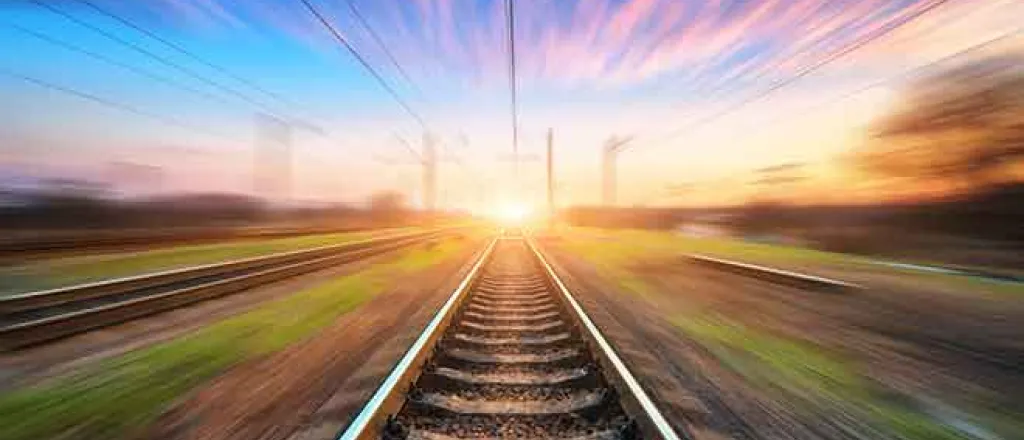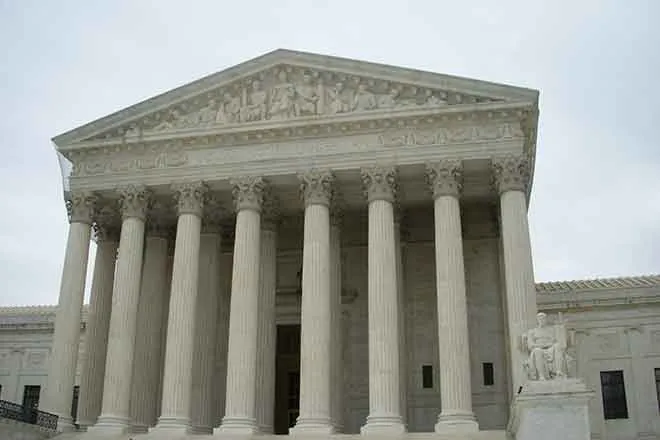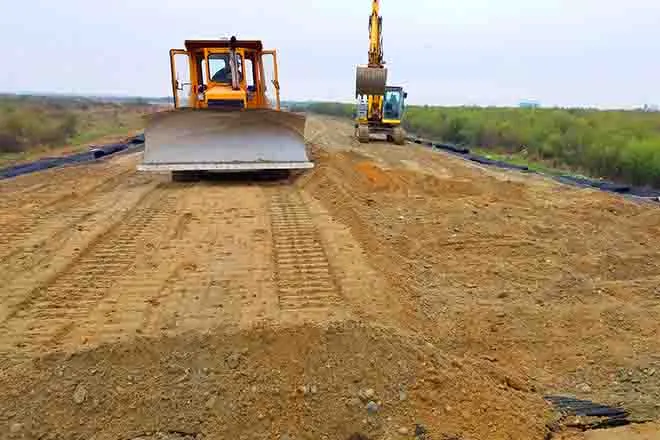
Tracing the route — and risks — of Utah’s proposed Colorado-bound oil trains
(Colorado Newsline) A proposal to build a new short-line railroad in the oil fields of eastern Utah could soon result in a dramatic increase in the amount of hazardous materials being shipped by rail through communities across western and central Colorado.
The 88-mile Uinta Basin Railway, backed by a partnership between industry and Utah county governments, would rank among the largest sustained efforts to transport crude oil by rail ever undertaken in the U.S. It would allow drillers to drastically ramp up production in Utah’s oil-rich Uinta Basin and ship the additional output to refineries on the Gulf Coast. Federal regulators say 90% of the resulting traffic would be routed east on the Union Pacific railroad through the Rocky Mountains and into Denver.
Some of the state’s most scenic, fragile and densely populated areas could soon be traversed by as many as five two-mile-long trains of tanker cars per day, hauling an average daily load of 315,000 barrels of Utah’s waxy crude oil. That would be more crude oil than was transported by rail across the entire U.S. last year, according to federal data — making the Colorado River Valley and parts of the Front Range the nation’s new oil-train superhighway.
While local opposition is mounting, the project has so far received only green lights from President Joe Biden’s administration, most recently in the U.S. Forest Service’s approval of a permit to build the new railway through a protected area in Utah’s Ashley National Forest. Backers of the project, which carries a multibillion-dollar price tag, plan to apply for special tax-exempt infrastructure bonds from the U.S. Department of Transportation, drawing further protests from Colorado officials.
In an analysis, federal regulators sized up the “downline impacts” of the new railway, predicting that a spill of up to 30,000 gallons of oil would occur roughly once every five years. Colorado communities along the potential downline route have called that review “fatally flawed,” arguing that it didn’t do nearly enough to study the risks of spills, fires and other accidents along some of the most precarious stretches of railroad in the country.
This week, Newsline and the Kiowa County Press will publish Down the Line, a five-part series tracing the eastbound route that Uinta Basin oil trains could soon take through the Colorado River Valley, across the Continental Divide and down the eastern face of the Front Range to the Interstate 25 corridor.
Past, present and future
It’s a route that not only passes through some of Colorado’s most cherished landscapes but also retreads more than a century and a half of the state’s rich railroading history. From the railroad company town of Grand Junction to the Moffat Tunnel, from the Dotsero Cutoff to the Big Ten Curve, Colorado’s only remaining east-west rail line was cobbled together over the course of a decades-long struggle to lay track over snowy mountain passes and along perilous river gorges, uniting its mining boomtowns and establishing a transcontinental competitor to the famed Union Pacific to the north.
Today, the route is just one of many owned and operated by that former rival, making up the eastern half of the Union Pacific’s “Central Corridor” between northern Nevada and Denver. It continues to be shaped by more recent historical forces, from a steep decline in the coal shipments that once made up the bulk of its traffic to a nationwide wave of deregulation, consolidation and investor pressure that has swept over the rail industry since the 1980s.
And amid growing alarm over climate change and progress toward projects like Front Range Passenger Rail, the Uinta Basin Railway exposes two sharply contrasting visions for Colorado’s railroading future — one that imagines a revival of the transit infrastructure that once connected its towns to one another, moving people and consumer goods in more energy-efficient ways, and another that doubles down on the rewards and risks of the global fossil-fuel economy, replacing disappearing coal-train traffic with high volumes of another heavy-industrial commodity.
Fears of the railway’s impact were deepened earlier this year by a dramatic train derailment and chemical fire in East Palestine, Ohio, and a series of similar accidents in recent months. As Newsline was making final preparations to publish this series, a train of tanker cars derailed on the morning of June 16 at Suncor Energy’s Commerce City oil refinery just north of Denver.
A spokesperson for BNSF said that that the train “experienced a minor derailment,” the cause of which is under investigation. The company said that 16 of the 17 derailed tank cars were empty and “no hazardous materials were involved,” but activists say the incident highlights the risk of the Utah project.
“The number and frequency of these derailments are certain to increase dramatically if the Uinta Basin Railway is built,” Ted Zukoski, a senior attorney with the Center for Biological Diversity, which has joined Colorado’s Eagle County in suing to overturn the project’s approval. “And the impacts won’t always be so limited.”
See below for more information about each of the series’ five parts.
Part 1: The Valley
Eastbound trains on the Central Corridor enter Colorado through the remote Ruby Canyon, surrounded on all sides by protected public lands. They follow the course of the Colorado River in reverse, entering the fertile Grand Valley near Fruita, before passing through Grand Junction, a historic railroad town, and the vineyards and fruit orchards of Palisade.
Part 2: Boomtowns
The towns between the Grand Valley and Glenwood Canyon have long been shaped by the boom-and-bust cycles of fossil fuel extraction — first coal, then oil, and now natural gas. Train tracks run right along the main streets of towns like New Castle and Silt, the hometown of U.S. Rep. Lauren Boebert. But communities that once felt connected by rail service now feel threatened by mile-long trains of freight cars and hazmat tankers that speed through town without stopping.
Part 3: The Canyons
Scarred in recent years by devastating wildfires and mudslides, conditions in Glenwood Canyon bedeviled structural engineers for so long that a 12-mile section of Interstate 70 built into its cliffs became in 1992 the last segment of the federal highway system to be completed. Washouts, rockslides and emergency closures are frequent, and it’s only the first of a series of scenic and fragile mountain gorges that eastbound trains pass through as they charge upward to the Continental Divide.
Part 4: Headwaters
After having followed the Colorado River for hundreds of miles, the railroad travels the last leg of its journey up the Western Slope along the banks of its tributary, the Fraser, ranked as one of the West’s most endangered rivers. Turning east at the base of the Winter Park ski resort, trains bound for Denver pass under the Continental Divide via the 6.2-mile Moffat Tunnel, then begin a steep descent down the eastern face of the Front Range, passing alongside South Boulder Creek and Gross Reservoir, a key part of a Denver Water system that serves 1.5 million people.
Part 5: The City
Trains complete a sweeping series of curves down the foothills of the Front Range south of the site of the former Rocky Flats nuclear weapons plant, finally entering the Denver metro area from the northwest. Near the rail yards and industrial spurs on the city’s north side, predominantly low-income and Latino communities have long borne the burdens of heavy rail traffic, and a City Council member’s decade-long fight to more strictly regulate land use along railroad rights-of-way has taken on new urgency in the wake of the Uinta Basin Railway’s approval. From Denver, the oil trains would continue on to the northeast, east or south en route to refineries in Texas, Oklahoma or Louisiana.
Colorado Newsline is part of States Newsroom, a network of news bureaus supported by grants and a coalition of donors as a 501c(3) public charity. Colorado Newsline maintains editorial independence. Contact Editor Quentin Young for questions: info@coloradonewsline.com. Follow Colorado Newsline on Facebook and Twitter.

















